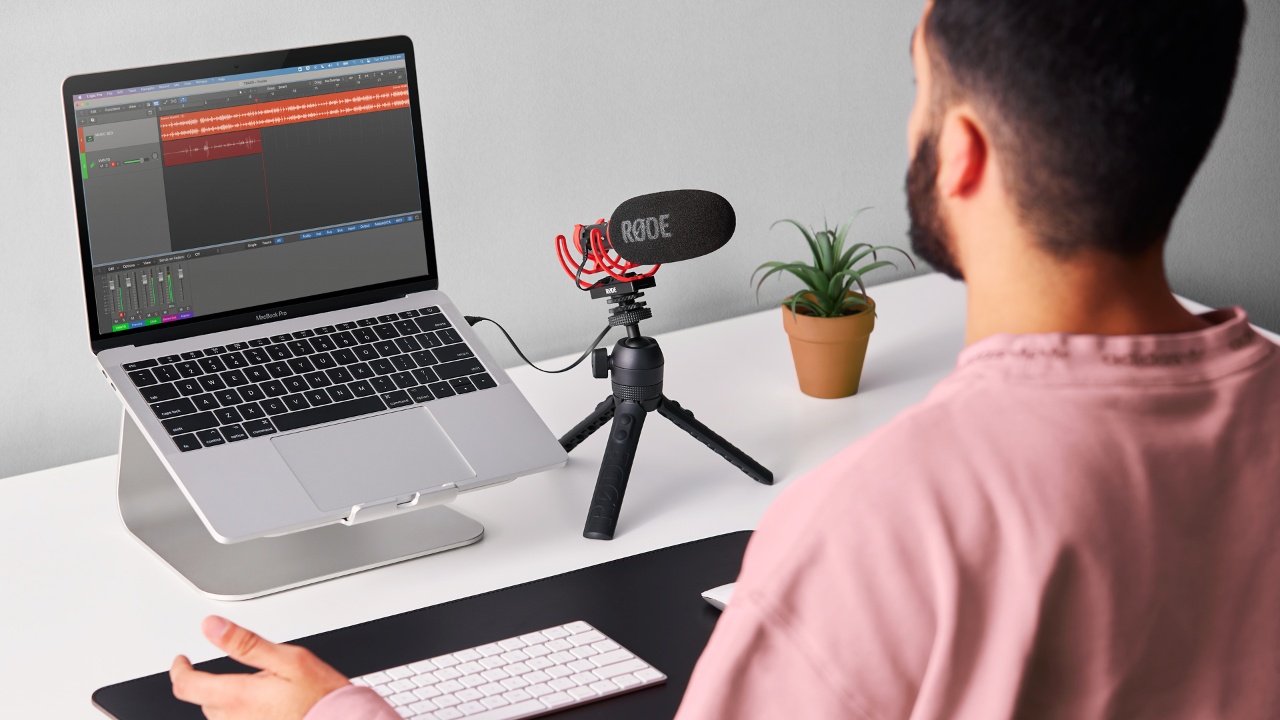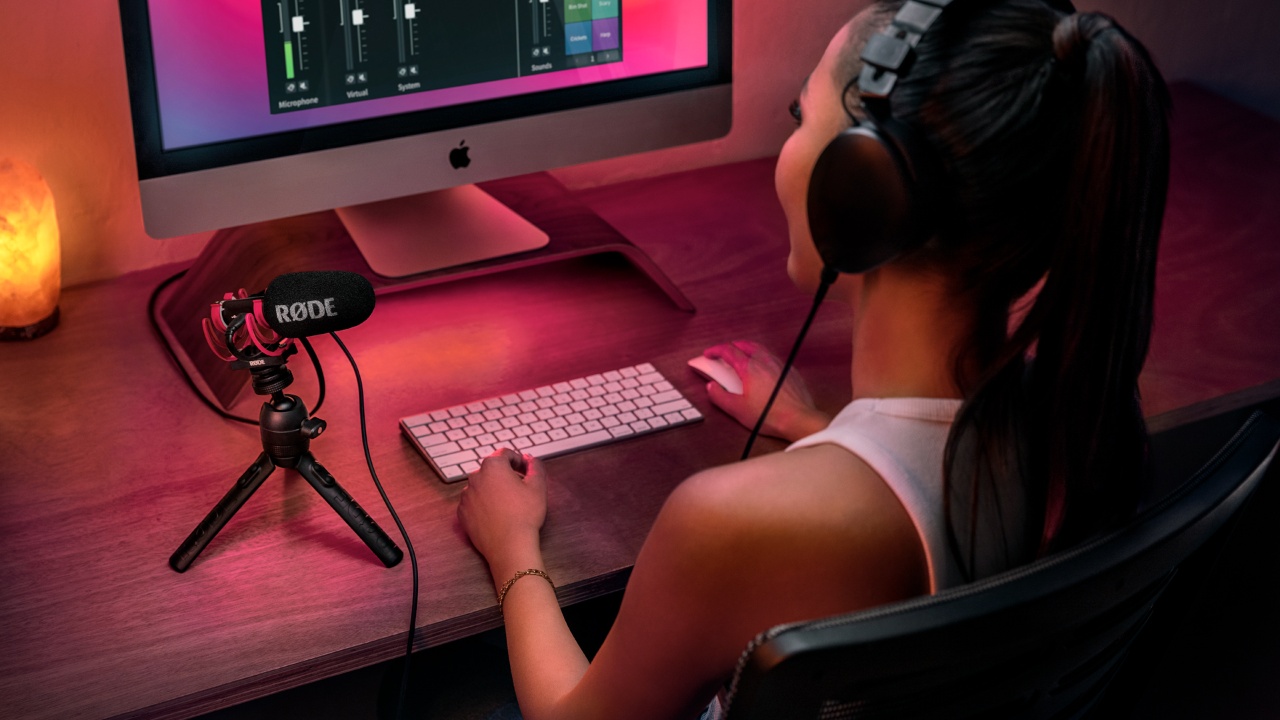Using A Shotgun Microphone For Podcasting Or Streaming
With a worldwide audience in the billions, podcasting and streaming have fast become two of the most popular media formats in recent years, with many turning their talents and ideas into thriving careers.
The ability to interact and broadcast to viewers and listeners from across the globe with the click of a button has meant that the race for new, exciting and high-quality content is at the top of the priority list for almost every podcaster, streamer and creator.

Traditionally, large-diaphragm condenser and dynamic microphones are behind the full-bodied, in-your-face broadcast sound that has become synonymous with streams and podcasts. However, shotgun microphones are another great choice that you may want to consider. Not only are they designed for voice recording, they are also highly directional, making them a versatile option for many recording scenarios.
Below, we’ll take you through all of the important details and features of shotgun microphones, the benefits they offer for podcasting and streaming, and how to rig them up to get the best quality audio for your content.
What Is A Shotgun Microphone?
Shotgun microphones are easily identifiable by their long, thin tubular design. They are highly directional microphones with a narrow sound pickup, meaning they are more sensitive to sound right in front of the microphone, while sound from the side and behind ("off-axis") is rejected.
Because of this, they are very "accurate" when recording sound at a distance and can be positioned further away from a sound source while still retaining detail and clarity. For this reason, they are often the go-to microphone in film and video applications, particularly for recording dialogue (when used as a boom or on-camera microphone), as well as sound effects ("Foley") and ambient sound.
Shotgun microphones vary in size, ranging from very compact (such as the VideoMic GO II) to very long (such as the NTG8), and offer a variety of features, from USB connectivity to on-board high-pass filters and gain controls.

The super-powerful NTG5 shotgun microphone – perfect for filmmaking, but also great for certain podcasting and streaming applications
Benefits of Using a Shotgun Microphone for Podcasting or Streaming
While not for everyone, there are some scenarios where using a shotgun microphone for podcasting or streaming can be highly beneficial.
The biggest advantage of shotgun microphones is their high directionality and excellent off-axis rejection. These characteristics allow you to place the microphone further away from what you are recording and still capture crisp, full-bodied audio with far less ambient room sound than if you were using another type of microphone.
This is ideal for a gaming or livestreming setup where you don't want your microphone to be in frame, or a filmed podcasting scenario where you and your guests are sitting on a couch or around a table and you want to reduce clutter in the shot.
Compact shotgun microphones like the VideoMic GO II and VideoMic NTG are also great for podcasting and streaming when used on a desktop tripod like the Tripod 2.
Shotgun mics are designed for voice recording, meaning they’re perfectly suited to both podcasting and streaming. They are also very versatile microphones and are useful for other applications you may need a mic for, such as recording interviews or run-and-gun filmmaking.

The VideoMic NTG (with the WS-Chroma and RØDE Connect) being used in a gaming streamer setup
Mounting a Shotgun Microphone
There are a few easy ways to mount a shotgun microphone when podcasting or streaming, depending on your intended use and recording setup.
Using a Stand or Boom Arm
A great way to leverage a shotgun mic's high directionality is to attach it to a boompole or stand that is positioned outside of the camera shot. The mic should be positioned outside of the frame, a few feet above and pointed directly at the intended sound source (i.e. who is talking) for the best results. There are several great options in the RØDE range, such as the Boompole Pro or the Mini Boompole if you’re after a more compact and lightweight option.

The VideoMic NTG mounted on a Boompole Pro
Using a Studio Arm
Another great option is the more traditional podcasting or streaming approach of using a studio arm, as you would with a studio condenser or dynamic microphone. A shotgun microphone will need to be attached to either a shockmount or a clip such as the RM5 before it can be mounted onto a studio arm like the PSA1 or PSA1+. Once it has been mounted onto the arm you can use it as you would any other microphone, but pay careful attention to mic placement. Remember, the directional nature of shotgun microphones means that when podcasting or streaming, you'll need to have it pointed directly at your mouth for the best results.
Using a Desk Stand or Tripod
Lastly, a shotgun mic can be simply mounted on a tripod like the Tripod 2 or a desk stand such as the DS1 and placed in front of the person who will be speaking. This is a great option for podcasting/streaming setups where you need to be more portable – something that is a little harder with the two methods mentioned above.

The VideoMic NTG mounted on the Tripod 2 and connected to a laptop
Types of Shotgun Microphones
Shotgun Microphones with an XLR Output
Most "traditional" shotgun microphones have an XLR output. These are typically longer "professional" shotgun microphones that are perfect for booming as they offer excellent directionality. The NTG3, NTG4 and NTG5 are great examples of shotgun microphones with an XLR output.
If you're looking to record into a computer, you're going to need an audio interface to get connected. This will also provide the power necessary to operate the mic. You could also connect it to a mixer, portable audio recorder, or an all-in-one production console like the RØDECaster Pro, which is ideal for a multi-person recording setup.

The NTG4 mounted on a camera – a high-quality streaming setup
Shotgun Microphones with a 3.5mm Output
The RØDE VideoMic range is a great example of on-camera shotgun microphones that feature a 3.5mm output. These are either battery or plug-in powered and can be plugged straight into the 3.5mm port of a camera.
If you want to use a 3.5mm shotgun mic with a computer, you will need an audio interface. We recommend the AI-Micro, which features dual 3.5mm inputs and a headphone output for audio monitoring. If you want to use an audio interface with an XLR input, you will need a 3.5mm to XLR adaptor, such as the VXLR (note: if your microphone needs plug-in power to operate, use an adaptor that converts phantom power to plug-in power like the VXLR+ or VXLR Pro).
USB Output
Our next-generation range of RØDE VideoMics, including the VideoMic GO II and the VideoMic NTG, feature a USB output as well as a 3.5mm output. This gives them the unique ability to plug be plugged straight into a computer or smartphone without the need for an audio interface or any messy cables or adaptors.
All you need to do is plug the microphone straight into the USB port of the computer and you’re ready to start recording.

The VideoMic GO II and RØDE Connect are a great combo for podcasting or streaming
These microphones are also compatible with RØDE Connect, our free podcasting and streaming software. This allows you to connect up to four microphones to a computer with complete level control, powerful audio processing (including a noise gate, compressor and powerful APHEX effects) for recording pro-quality sound with ease. RØDE Connect is also perfect for gamers and streamers, with easy integration of external audio sources like chat applications, gameplay sound, mic audio and more.
Find out more about RØDE Connect here.
If you're a streamer or a podcaster and are looking for a microphone that offers great directionality and high-quality sound, look no further than a good shotgun microphone. Check out our range of industry-leading shotgun mics here.